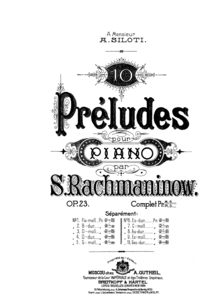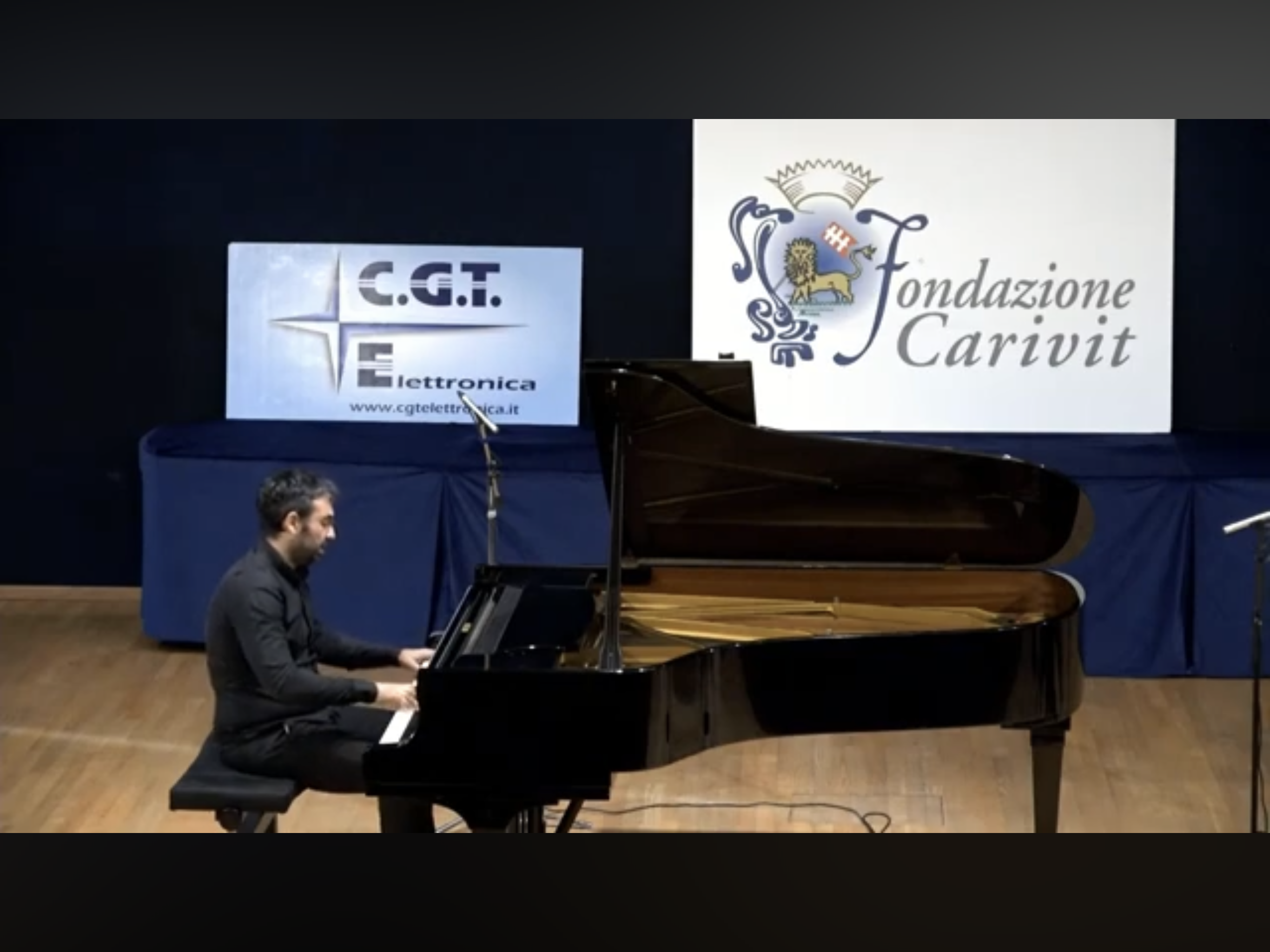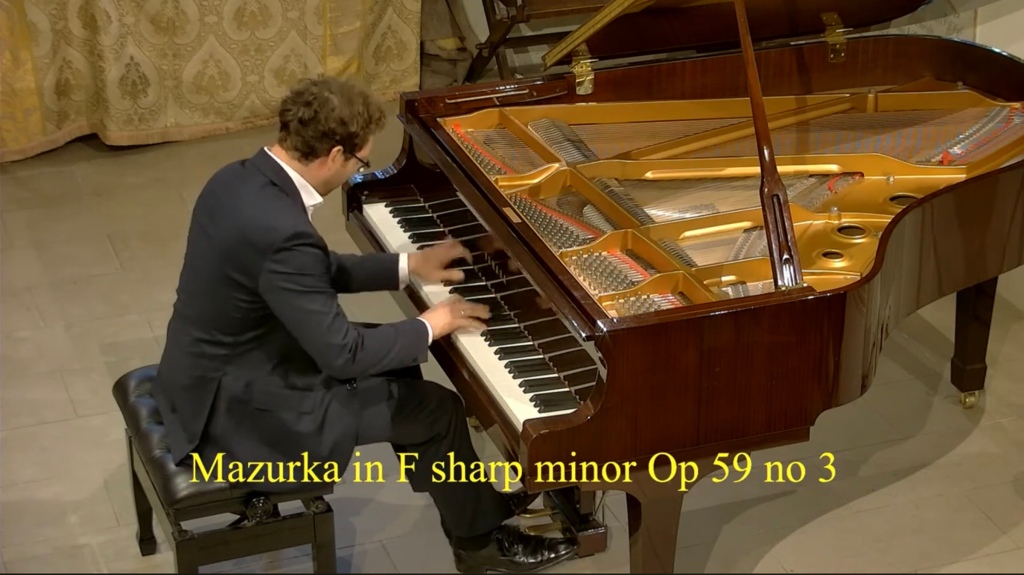
Elisabeth Brauss at the Wigmore Hall with Schubert,Ravel and Schumann with playing of intelligence and artistry.Superb technical mastery allowed her to delve fearlessly into the depths of three master works and extract their very essence with an innocent ‘joie de vivre’ that brought everything she played vividly to life.
Franz Schubert (1797-1828)
Piano Sonata in A D664 (?1819)
I. Allegro moderato • II. Andante • III. Allegro
Maurice Ravel (1875-1937)Le tombeau de Couperin (1914-7)
I. Prélude • II. Fugue • III. Forlane •
IV. Rigaudon • V. Menuet • VI. Toccata
Interval
Robert Schumann (1810-1856)Carnaval Op. 9 (1834-5)
Préambule • Pierrot • Arlequin • Valse noble •
Eusebius • Florestan • Coquette • Réplique • Papillons • Lettres dansantes • Chiarina • Chopin • Estrella • Reconnaissance • Pantalon et Colombine •
Valse allemande • Paganini • Aveu • Promenade • Pause • Marche des Davidsbündler contre les Philistins

There was an overall sense of harmonic structure to the Andante but with such control of sound that her exquisitely beautiful playing was of whispered wonder as the melodic line became the vibrations of a heart that beat with delicacy.Springing back to life with the Allegro of scintillating sparkling ‘joie de vivre’ with an exhilarating sense of rhythmic energy.Streams of notes just poured from Elisabeth’s well oiled fingers with fluidity and ease in one of the most simply joyous movements that Schubert ever wrote.

The elusive fugue was played with absolute clarity and beauty of sound as each strand was beautifully shaped with its yearning insistence.Lovely to read in the programme notes Alfred Cortot describing the fugue as ‘timid voices of nuns at prayer,the gentle atmosphere of the cloister,resigned peace of the spirit’
A beautiful flowing lilt to the Forlane was followed by the rude interruption of the Rigaudon only to be interrupted by the trio where the melodic line just seemed to float suspended on a gently beating rhythmic background.There was a serenity and simplicity to the Menuet with the chorale central episode played with reverence and a wondrous sense of line where even the final whispered vibrations of the Menuet were interrupted only by the seemingly gentle patter of the Toccata.A transcendental control and sense of rhythmic drive of extraordinary clarity but clouded only by the wondrous melodic lines that Ravel miraculously incorporates into this unforgiving tour de force of piano playing.Elisabeth played these episodes with a sudden mellifluous outpouring that was like a cloud opening and momentarily rays of sunshine were allowed to reign.The final pages were a truly amazing ‘tour de force’ with no rallentando from this great virtuoso but playing of brilliance , rhythmic drive and incredible sense of line that is only for the blessed few.

It was exactly this uncontaminated approach that made for such an exhilarating journey and a very satisfying second half to her recital.
An artist is known by their programmes and Elisabeth presented like Arrau would always do,three great blocks without any frills or fillers but just allowing the composer to speak for themselves with playing of a faithful interpreter of intelligence and great artistry.
After the opening declaration of intent ‘Pierrot’ tiptoed in but with rather over violent interruptions from Florestan though.There was subtle colouring in ‘Arlequin’and a beautiful shape to the ‘Valse Noble’ with its central episode of tender beauty.’Eusebius’ entered with a timeless hushed whisper of ravishing beauty before the quixotic charm of ‘Florestan’ burst onto the scene.There was subtle colouring and charm to ‘Coquette’ but I would not have taken Schumann’s sforzandi quite so out of context!
Elisabeth like most pianists chose not to include the ‘Sphinxes’ which are really just a secret code that pervade all 22 of these mignons.Rachmaninov is the only pianist I remember playing them on his famous recording which I suppose being a composer he saw as a reason to include them though disguised in Mussorgskian robes!
Scintillating busy ‘Papillons’ buzzed over the keys with streams of beautifully shaped sounds and the ‘Letttres dansantes’ literally bounced off the keys.’Chiarina’ was strangely Beethovenian in its vehemence but with some very clearly etched inner melodic lines.’Chopin’ then entered on the same whirlwind of sounds inspired by ‘Chiarina’ which made the unwinding of such a passionate outpouring an oasis of ravishing luminosity and whispered beauty.’Estrella’ was very rhythmically played and contrasted with the superb agility and shape of ‘Reconnaisance’.The sublime beauty of the central episode made the return of an old friend feel like a breath of fresh air blowing over the keys.There was fleeting lightness to ‘Pantalon et Colombine’ usually played by lesser artists with machine gun like precision but where in Elisabeth’s sensitive hands the final bars of a sweet afterthought was the ideal preparation for the coquettish charm of the ‘Valse allemande’.
‘Paganini’, the inspiration for Liszt, was played with superb technical control and impeccable phrasing all amazingly at breakneck speed.Laying exhausted ‘Aveu’ was played with whispered delicacy.’Promenade’ drifting in like a dream fantasy full of capricious freedom.An exhilarating virtuosistic pause lead to the ‘March against the Philistines.’Non Allegro asks Schumann but Elisabeth was on the crest of a wave that swept all before her,including us the audience,as she opened up all the stops in her kaleidoscopic technique to carry us with her in this final collection of flashing past episodes leading to the excitement and race to the finish.
All the fun of the Circus where even Elisabeth was visibly exhausted from the exhilarating journey she had taken us on.
A Schumann encore too with the first of his Kinderszenen ‘Of foreign lands and peoples’ which was played with such whispered tones of beauty that the minutes of aching silence at the end were one of those occasions where we were all united as one in a cloud of celestial beauty.


GRAMOPHONE
The pianist Elisabeth Brauß has been praised by Gramophone Magazine for “the maturity and sophistication of her thoughtful interpretations” which “would be the pride of any pianist twice her age”. Born in Hannover in 1995, Elisabeth is quickly establishing herself as one of the most exciting and versatile musicians of her generation.
As a former member of the BBC New Generation Artist Scheme, Elisabeth continues to appear regularly with solo, chamber and concerto engagements across the UK. In 2021 she made her debut at the BBC Proms, performing Mozart Piano Concerto No.23 with the BBC Philharmonic Orchestra. In a new partnership between this scheme and the Hallé Orchestra, she was awarded the Terence Judd-Hallé Award, given to a NGA graduate considered to be on the cusp of a major international career.
This season, Elisabeth returns to Staatsorchester Stuttgart and makes debuts with Royal Liverpool Philharmonic, London Chamber Orchestra and Staatstheater Meiningen. She will also tour Germany with Wurttemberg Chamber Orchestra and trumpeter Simon Höfele, and will tour Australia with her recital partner, the violinist Noa Wildschut. A renowned chamber musician, Elisabeth will have a three-day residency at Belfast Arts Festival comprising of a solo recital and chamber collaborations. She appears regularly at Wigmore Hall and this season also appears in recital at St George’s Bristol, St John’s International Piano Series Oxford and Royal Welsh College of Music.
Further recent highlights include Finnish Radio Symphony, The Hallé, BBC Symphony, BBC Scottish Symphony and Ulster Orchestras, in addition to dates with Deutsche Kammerphilharmonie Bremen, NDR Radiophilharmonie Hannover, Frankfurt Radio Symphony Orchestra and Staatsphilharmonie Nürnberg in her native Germany. During the 2022/23 season, Elisabeth was Artist in Residence at Edesche Concertzaal, performing both solo and chamber concerts. Elisabeth also collaborates with the composer Max Richter, and has appeared in his Reflektor Festival at the Elbphilharmonie Hamburg.
In May 2017, Elisabeth’s debut CD featuring works by Beethoven, Prokofiev, Chopin and Denhoff, was released by OehmsClassics. It received critical acclaim and was named ‘Editor’s Choice’ by Gramophone Magazine. Since then, she has gone on to release three more albums, collaborating with Valentino Worlitzsch, Simon Höfele, and the Beethoven Orchester Bonn featuring compositions by Max Richter to commemorate Beethoven’s 250th anniversary. Elisabeth’s most recent recording of the Bacewicz Double Concerto with Finnish Radio Symphony, Nicholas Collon & Peter Jablonski was awarded 5* and Concerto of the Month by BBC Music Magazine.
In addition to winning first prize at the International Steinway Competition in Hamburg, and the International Grotrian Steinweg Piano Competition in Braunschweig, Elisabeth was awarded the Prätorius Musikpreis Lower Saxony Prize in 2012. Further accolades include the main and audience awards at the TONALi Grand Prix in Hamburg (2013) and first prize at the Kissinger KlavierOlymp (October 2016).

https://christopheraxworthymusiccommentary.com/2023/06/26/dinara-klinton-at-st-marys-reveals-the-consummate-artistry-of-a-great-pianist/





Le Tombeau de Couperin (The Grave of Couperin) was composed between 1914 and 1917. The piece is in six movements, based on those of a traditional Baroque suite. Each movement is dedicated to the memory of a friend of the composer (or in one case, two brothers) who had died fighting in world War 1.Ravel also produced an orchestral version of the work in 1919, although this omitted two of the original movements.

Written after the death of Ravel’s mother in 1917 and of friends in the First World War, Le Tombeau de Couperin is a light-hearted, and sometimes reflective work rather than a sombre one which Ravel explained in response to criticism saying: “The dead are sad enough, in their eternal silence.”
The first performance of the original piano version was given on 11 April 1919 by Marguerite Long , in the Salle Gaveau in Paris . Long was the widow of Joseph de Marliave, to whom the last movement of the piece, the Toccata, is dedicated.
Prelude in memory of First Lieutenant Jacques Charlot (transcriber of Ma mère l’oye for piano solo)
Fugue in memory of Second Lieutenant Jean Crupp
Forlane. in memory of First Lieutenant Gabriel Deluc (a Basque painter from Saint-Jean-de-Luz)
Rigaudon in memory of Pierre and Pascal Gaudin (two brothers and childhood friends of Ravel, killed by the same shell in November 1914)
Menuet in memory of Jean Dreyfus (at whose home Ravel recuperated after he was demobilized)
Toccata. in memory of Captain Joseph de Marliave (musicologist and husband of Marguerite Long)

Born
8 June 1810
Zwickau ,Kingdom of Saxony
Died
29 July 1856 (aged 46)
Bonn, Rhine Province, Prussia
Carnaval. Scènes mignonnes sur quatre notes Robert Schumann
Carnaval had its origin in a set of variations on a Sehnsuchtswalzer by Franz Schubert , whose music Schumann had discovered only in 1827. The catalyst for writing the variations may have been a work for piano and orchestra by Schumann’s close friend Ludwig Schuncke,a set of variations on the same Schubert theme. Schumann felt that Schuncke’s heroic treatment was an inappropriate reflection of the tender nature of the Schubert piece, so he set out to approach his variations in a more intimate way, working on them in 1833 and 1834.
Schumann’s work was never completed, however, and Schuncke died in December 1834, but he did re-use the opening 24 measures for the opening of Carnaval.
The 21 pieces are connected by a recurring motif . The four notes are encoded puzzles, and Schumann predicted that “deciphering my masked ball will be a real game for you.”
Both Schumann and his wife Clara considered his solo piano works too difficult for the general public. ( Chopin is reported to have said that Carnaval was not music at all.Chopin did not warm to Schumann on the two occasions they met briefly and had a generally low opinion of his music.) Consequently, the works for solo piano were rarely performed in public during Schumann’s lifetime, although Liszt performed selections from Carnaval in Leipzig in March 1840, omitting certain movements with Schumann’s consent. Six months after Schumann’s death, Liszt later wrote that Carnaval was a work “that will assume its natural place in the public eye alongside Beethoven’s Diabelli Variations, which in my opinion it even surpasses in melodic invention and conciseness”.
Sphinxs consists of three sections, each consisting of one bar on a single staff in bass (F) clef, with no key, tempo, or dynamic indications. The notes are written as breves . The pitches given are the notes E♭C B A (SCHA) and A♭C B (AsCH) and A E♭C B (ASCH). Many pianists and editors, including Clara Schumann, advocate for omitting the Sphinxs in performance.
These are musical cryptograms , as follows:
- A, E♭, C, B – German: A–Es–C–H (the Es is pronounced as a word for the letter S)
- A♭, C, B – German: As–C–H
- E♭, C, B, A – German: as Es–C–H–A
The first two spell the German name for the town of Asch (now As in the Czech Republic), in which Schumann’s then fiancée, Ernestine von Fricken, was born.The sequence of letters also appears in the German word Fasching, meaning carnival. In addition, Asch is German for “Ash”, as in Ash Wednesday , the first day of Lent. Lastly, it encodes a version of the composer’s name, Robert Alexander Schumann. The third series, S–C–H–A, encodes the composer’s name again with the musical letters appearing in Schumann, in their correct order.

The Piano Sonata in A major D.664, op posth 120 was written in the summer of 1819.The manuscript, completed in July 1819, was dedicated to Josephine von Koller of Steyr in Upper Austria, whom he considered to be “very pretty” and “a good pianist”. The lyrical, buoyant, in spots typically poignant nature of this sonata fits the image of a young Schubert in love, living in a summery Austrian countryside, which he also considered to be “unimaginably lovely”.













































































































































